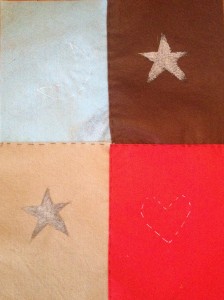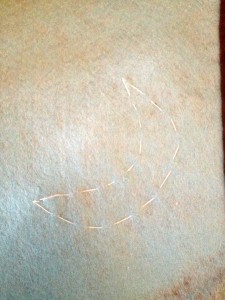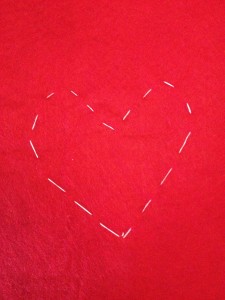Weaving in Ideas of Islam and “Conversion”
The small quilt represents the weaving together of ideas about Islam and religion into household through daily tasks. The quilt was produced by stitching together four pieces of different colored cloth. In the bottom right quadrant is a stitched heart, in the top left quadrant a moon, and in the other quadrants are silver stars. The heart, moon, and stars symbolize the connection of the day-to-day life chores of village women spinning together cloth or grinding grain to contemplation of the heavenly questions of life beyond earth and death, the meaning of love as a transcendental experience, and the greater purpose of life.
The quilt was inspired by the work of Richard Eaton who described the Sufi folk poetry which was used as the vehicle to spread ideas about Islam, primarily sung by women during domestic tasks in the home (Eaton, 1974). These folk poems elevated simple chores into important tasks, empowering women in this process of spreading Islamic ideas in these agrarian villages. The quilt additionally shows the process of Islam spreading through South Asia not as a simple black and white moment of conversion, but rather as gradual passing down of concepts through songs and lullabies to children. The ideas of weaving in religious concepts into already established worldviews also recalls the work Sufia Uddin who suggests the need to use “terms they could comprehend,” in order to verbalize the spiritual within preexisting frameworks (Sufia Uddin, 2006 ). These ideas again reinforce the concept of the spread of Islam in South Asia not as an immediate, but more gradual process.


